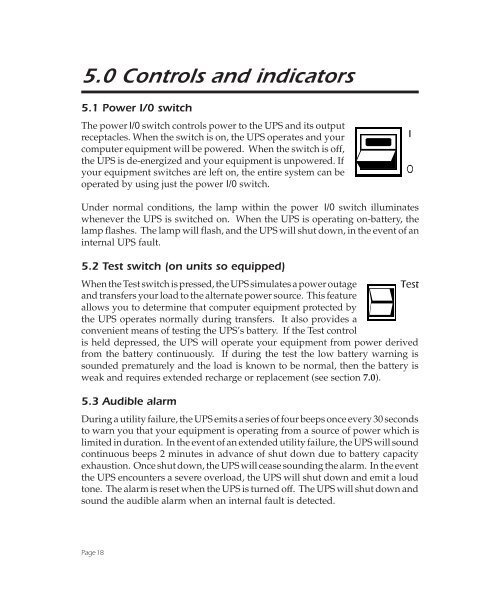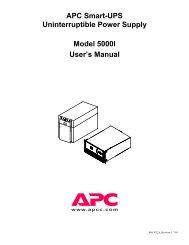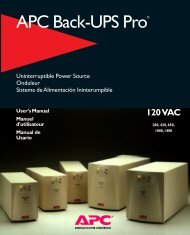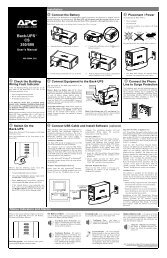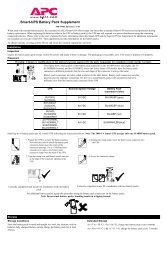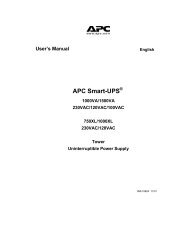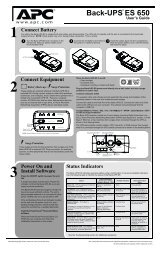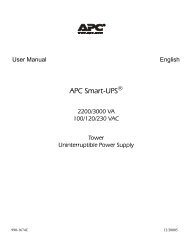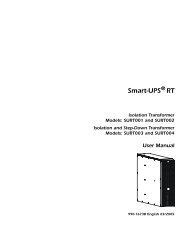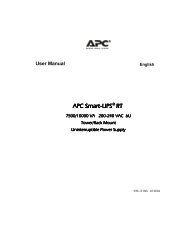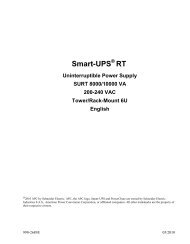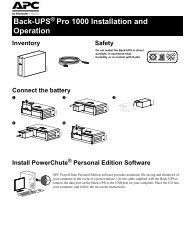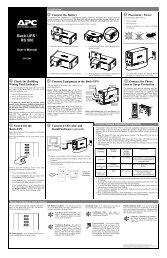Back-UPS® - APC Media
Back-UPS® - APC Media
Back-UPS® - APC Media
You also want an ePaper? Increase the reach of your titles
YUMPU automatically turns print PDFs into web optimized ePapers that Google loves.
5.0 Controls and indicators<br />
5.1 Power I/0 switch<br />
The power I/0 switch controls power to the UPS and its output<br />
receptacles. When the switch is on, the UPS operates and your<br />
computer equipment will be powered. When the switch is off,<br />
the UPS is de-energized and your equipment is unpowered. If<br />
your equipment switches are left on, the entire system can be<br />
operated by using just the power I/0 switch.<br />
Under normal conditions, the lamp within the power I/0 switch illuminates<br />
whenever the UPS is switched on. When the UPS is operating on-battery, the<br />
lamp flashes. The lamp will flash, and the UPS will shut down, in the event of an<br />
internal UPS fault.<br />
5.2 Test switch (on units so equipped)<br />
When the Test switch is pressed, the UPS simulates a power outage<br />
and transfers your load to the alternate power source. This feature<br />
allows you to determine that computer equipment protected by<br />
the UPS operates normally during transfers. It also provides a<br />
convenient means of testing the UPS’s battery. If the Test control<br />
is held depressed, the UPS will operate your equipment from power derived<br />
from the battery continuously. If during the test the low battery warning is<br />
sounded prematurely and the load is known to be normal, then the battery is<br />
weak and requires extended recharge or replacement (see section 7.0).<br />
5.3 Audible alarm<br />
During a utility failure, the UPS emits a series of four beeps once every 30 seconds<br />
to warn you that your equipment is operating from a source of power which is<br />
limited in duration. In the event of an extended utility failure, the UPS will sound<br />
continuous beeps 2 minutes in advance of shut down due to battery capacity<br />
exhaustion. Once shut down, the UPS will cease sounding the alarm. In the event<br />
the UPS encounters a severe overload, the UPS will shut down and emit a loud<br />
tone. The alarm is reset when the UPS is turned off. The UPS will shut down and<br />
sound the audible alarm when an internal fault is detected.<br />
Page 18


